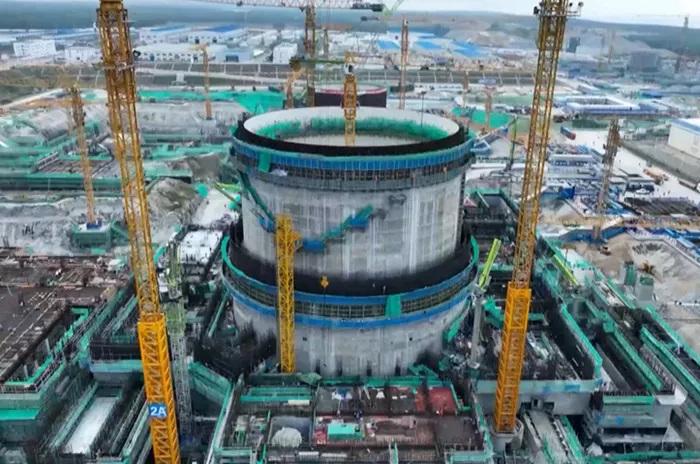The U.S. Department of Energy (DOE) announced a $900 million funding opportunity on October 16, aimed at fostering the deployment of the nation’s first two Generation III+ light water small modular reactors (SMRs). This initiative targets “first mover” teams that will pave the way for nuclear advancement while also supporting subsequent projects by addressing long-standing challenges in the industry.
Applications for this funding, created under the Consolidated Appropriations Act of 2024, are due by January 17, 2025, and are financed by the Infrastructure Investment and Jobs Act enacted in 2021. The funding opportunity announcement (FOA) is managed by the DOE’s Office of Clean Energy Demonstrations and the Office of Nuclear Energy and is divided into two tiers.
Funding Structure and Focus Areas
Tier 1 of the initiative allocates up to $800 million to two “first mover” teams consisting of utilities, reactor vendors, constructors, and end-users committed to deploying the initial SMR plant, while fostering a multi-reactor Gen III+ SMR order book. Over a decade-long award period, these teams will collaborate with the National Nuclear Security Administration (NNSA) to integrate security measures into their designs.
In contrast, Tier 2 offers up to $100 million to support additional Gen III+ SMR projects by addressing crucial gaps that have impeded the domestic nuclear sector. This tier focuses on three primary areas: site selection and preparation, supply chain development, and project enhancement.
Advancements in Nuclear Technology
The DOE emphasizes that the funding is specifically intended to promote single-unit light water reactors (LWRs) with outputs ranging from 50 MWe to 350 MWe. These Gen III+ SMRs are designed to optimize factory fabrication and incorporate substantial improvements over reactors in operation as of December 27, 2020.
This funding follows the DOE’s Advanced Reactor Demonstration Program (ARDP), which initiated a $4 billion investment in 2020 to support Gen IV technologies. Currently, the ARDP is backing two major projects: TerraPower’s Natrium Kemmerer 1 facility in Wyoming and X-energy’s Xe-100 reactor project in Texas.
Application Requirements and Industry Impact
To qualify for Tier 1 funding, applicants must include a U.S. commercial utility as the lead organization, in partnership with a Gen III+ SMR technology vendor and an engineering, procurement, and construction (EPC) contractor. Successful applicants are expected to achieve final design and licensing approvals by the early 2030s. Projects must demonstrate a Technology Readiness Level (TRL) of 6 or higher, ensuring readiness for procurement and construction.
Funding will be awarded in phases based on project milestones, with a total potential of $900 million across fiscal years 2024-2026. For Tier 2, awards will be distributed among various projects over a five-year period.
The DOE aims to create a sustainable pathway for the widespread deployment of Gen III+ SMRs, recognizing the necessity for up to 900 GW of additional clean power generation to meet net-zero emissions targets by 2050.
Despite the advantages of SMRs, the DOE acknowledges significant hurdles, including cost reliability, supply chain bottlenecks, and regulatory uncertainty. Recent legislative actions, including the ADVANCE Act, aim to mitigate these challenges and encourage the growth of the nuclear energy sector.
Funding applications will be prioritized based on their potential for successful deployment, the development of a Gen III+ SMR order book, and contributions to the resilience of the domestic nuclear industry.
Related topics:
- STACK Infrastructure Pioneers Advanced Biofuel Use at Norwegian Data Center
- Doosan Enerbility Partners with Siemens Gamesa and Equinor for 750MW Floating Wind Project
- Titan Unveils Revolutionary Flat-Proof Tire Technology at Equip Exp

